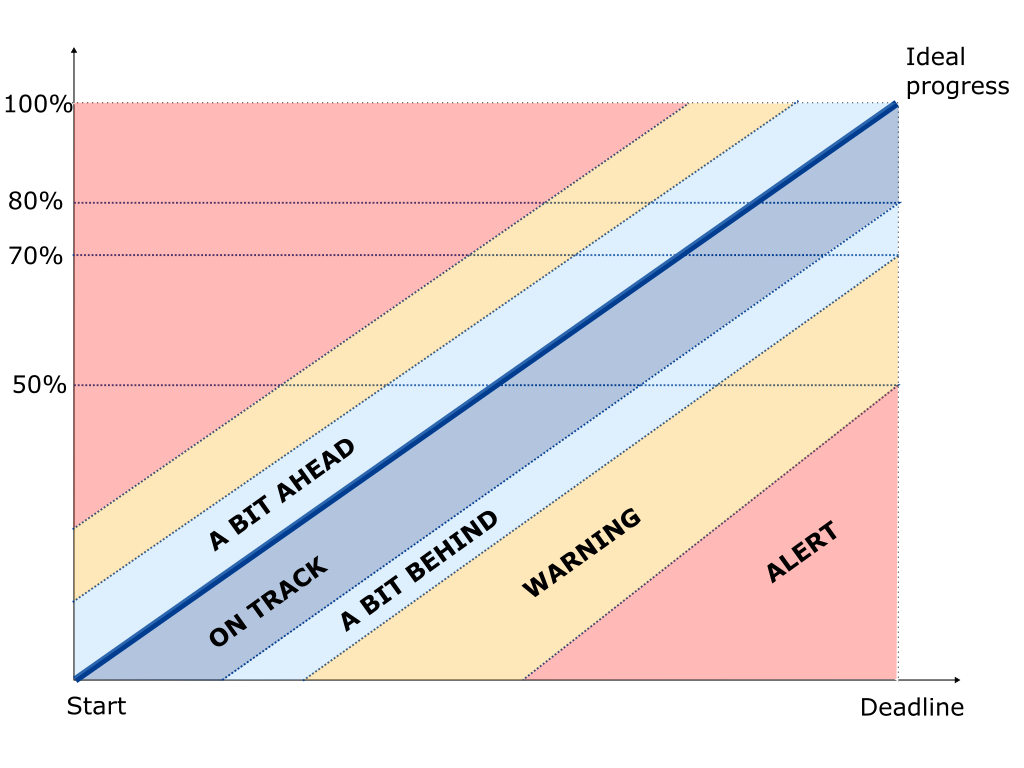
When it comes to setting and tracking goals using the Objectives and Key Results (OKR) framework, there's often a common misconception about how to interpret the status of an objective. Many believe that the objective's progress should be calculated as a simple average of all its key results' progress. However, this oversimplified approach can lead to misleading conclusions about the health of your goals.
Let's debunk this myth and understand OKR status correctly.
In the world of OKRs, there's a prevalent concept that aims to create room for personal and team improvement and growth. According to this concept, an OKR is defined and measured in such a way that a score between 0.8 and 1 (equivalent to 80% to 100%) is considered as passed or achieved. It's important to note that aiming for a strict 100% output is not the primary goal; instead, 100% should be seen as exceptional and rare, fostering growth and innovation within the organization. Conversely, an OKR with a score below 0.5 (50%) is deemed at risk or alert, signaling the need for a thorough review and potential replanning.
While this approach may seem reasonable on the surface, it falls short in practice when it comes to accurately measuring the progress of objectives. Averaging the progress of key results without considering their individual weights and deadlines can lead to misleading assessments. This approach assumes that all key results contribute equally to the success of the objective and that their timelines carry the same level of significance. However, in the dynamic real-world environment, such uniformity is a rarity.
Each key result associated with an objective has a unique weight that reflects its relative importance in achieving the overall objective. Some key results may be more critical than others, and their success might have a more significant impact on the objective's success.
To calculate the objective's progress correctly, we should consider these weights. An objective's progress should reflect the weighted contribution of each key result, not a simple average. This approach provides a more accurate representation of how key results are collectively driving the objective forward.
Key results often have different deadlines, which means they might not progress at the same rate throughout the OKR period. A key result with a longer deadline may naturally have slower progress early on but still be on track to achieve its target.
To determine the objective's status accurately, we need to consider the proportional time that each key result requires to accomplish its task. This means key results with later deadlines should have the flexibility to make slower progress initially.
At Tenolife, we recognize the importance of calculating objective progress accurately. To achieve this, we employ a formula that takes into account the weights assigned to each key result and the proportionate time required for their completion.


The objective status is evaluated based on its progress and the proportional required time of each key result.
In the realm of OKRs, it's crucial to recognize that an objective's progress is not merely the average of its key results' progress. Instead, it should reflect the weighted contribution of each key result, considering the diverse deadlines associated with them. By adopting this more accurate method, you can gain a clearer understanding of your objectives' true status and make informed decisions to keep your goals on the right track.
Don't allow misconceptions to steer you off course; interpret OKR status correctly for superior results.